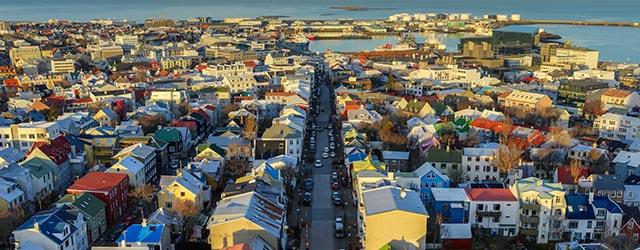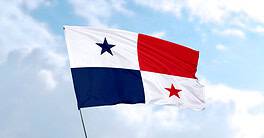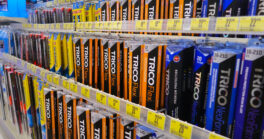Iceland has recovered smartly from the worst recession in its history. Now it must keep inflation at bay—and that might require a monetary overhaul.


When Nobel Prizewinning economist Paul Krugman was asked last January, at the Asian Financial Forum in Hong Kong, to name a country that had done a good job handling the crisis after 20082009, he said Iceland was the only example that came to mind. Icelandic economists and businesspeople are less sanguine than Krugman—and by no means in agreement among themselves—but the country’s numbers tell the story of an impressive recovery. “Oddly enough, the challenge is to make sure overheating doesn’t take place, now that we are seeing increased capital inflows and investment activities picking up after being largely dormant for almost seven years,” observes University of Iceland economist Gudrun Johnsen.
The turnaround is dramatic if one considers that after 16 years of growth, with a short pause in 2002, the country in the years after 2008 experienced its worst recession in history. Nearly all its local banks collapsed, and the government imposed capital controls. The Icelandic króna lost half its value, inflation reached 19%, and GDP took six years to return to pre-crisis levels. Now analysts expect growth of 4.6% in 2015, driven by a 7% surge in domestic demand.
The central bank recently raised interest rates, from 5.5% to 5.75%, to keep a lid on inflation; consumer prices in October were up 1.8% from the period a year earlier. Capital controls are expected to be lifted in 2016. Meanwhile, the króna has lately been the object of so much speculative trading that the central bank is considering imposing minimum reserve requirements or taxing carry trades in the currency.
Iceland is also experiencing unemployment that went all the way down to 2.6% in October, strong wage growth and pent-up consumer demand. As busloads of tourists from all over the world crisscross the island to admire its natural wonders, Iceland has to think about its future. “The key risk at the moment,” explains Daniel Svavarsson, director of economic research at Landsbankinn, “is that inflation will spiral out of control if fiscal and monetary policy is not applied responsibly.”
Thorsteinn Viglundsson, managing director of the Federation of Icelandic Employers, agrees that rapid wage increases and escalating consumer and public spending could threaten the country’s regained prosperity. “The main economic priority is preserving the economic stability that we have achieved during the past five years,” he says.
CURRENCY VS. CAPITAL FLOWS

Some observers favor a radical approach: getting rid of the króna and revamping the monetary system. Their logic is that an economy of Iceland’s size cannot sustain its own currency while maintaining free capital flows—and the latter are much more desirable than the former. Heidar Gudjonsson, a local enterpreneur and former hedge fund manager, thinks liquidation of the banks that collapsed during the crisis has brought monetary issues to the fore. He believes the government should focus on abolishing capital controls and fixing what he calls a “broken” monetary policy. “The easiest way and the only permanent solution is to dollarize the economy. Iceland is much too small to try to have an independent monetary policy and free movement of capital.” In the past, Gudjonsson has even suggested pegging Iceland’s currency to the Canadian dollar.
As for the banking system, many Icelanders are proud that their country sent to jail 26 local bankers considered responsible for the collapse of 2008. Nor is the housecleaning over. “We have not seen the full solution yet,” claims Thórólfur Matthiasson, an economist and professor at the University of Iceland. He thinks the next step will be reprivatizing the two biggest banks, Íslandsbanki and Arion. However, he adds, “it is possible that the politicians will try to get their hands on the spoils in the form of giving assets to their friends.”
The country recently repaid in full—ahead of schedule—its debt to the IMF, and Finance minister Bjarni Benediktsson is thinking of distributing 5% of the shares of Landsbankinn, one of the banks created in 2008 after the collapse of Glitnir Bank, to Iceland’s citizens as a kind of recovery dividend.
Where will future growth come from? In the past couple of years tourism has started bringing in more revenues than fishing or other natural-resource-based industries, although nearly 70% of total exports are still tied to resources like fish and aluminum. “Iceland will continue seeing growth in the tourism industry,” says economist Johnsen, adding: “Hopefully, the vibrant start-up environment which was launched after the crisis will start to yield export income and further diversify economic activities.”
Viglundsson of the employers’ association also puts faith in a new wave of entrepreneurialism. “We have had interesting developments in start-ups in the technology sector that hopefully will grow in the future,” he says, adding that even the seafood sector shows signs of innovation. Another area with economic potential for Iceland is sustainable development, including clean energy, organic and sustainable food production and environmentally friendly cosmetics and pharmaceuticals.
ARCTIC BOOM?
The main economic priority is preserving the economic stability that we have achieved during the past five years.
~ Thorsteinn Viglundsson, Federation of Icelandic Employers
The government has suspended negotiations on the possibility of Iceland’s joining the eurozone. Now some wonder whether the country might look to the Arctic as its next source of growth. Gudjonsson, who invests in Arctic regional development, believes the region’s potential is underappreciated. “We see now 20% annual growth of the aviation industry and a 30% growth in local tourism,” he says of Iceland. “This is due to the fact that Iceland is uniquely situated, and Reykjavik is the northernmost capital in the world.” Since 90% of the human population lives north of the equator, he adds, the shortest air route between continents is over the North Pole, making Iceland an attractive layover for travelers.
Meanwhile, Iceland’s ports, which are (despite the country’s name) ice-free year-round, offer modern infrastructure that Gudjonsson thinks will bring in more cargo shipment business. “And if the Northern Sea Route opens up,” he says, “Iceland could become a hub for transshipments.” Long-term, Gudjonsson points to the Arctic region’s supply-demand proposition: It has 20% of the world’s resources, he claims, but only 4 million inhabitants. As the area’s most developed base, Iceland is in a sweet spot, he believes.
Svavarsson of Landsbankinn is more cautious. For one thing, considering the country’s reliance on marine resources, he thinks it will be careful about turning itself into a regional economic powerhouse. “Looking further into the future, it is very well possible that responsible development of the Arctic will be a potential engine for growth,” he says, “but I think Iceland will always put environmental issues on top of the list of priorities.”
|
Central Bank: Central Bank of Iceland |
|||
|---|---|---|---|
|
International Reserves |
$4,362 million |
||
|
Gross Domestic Product (GDP) |
$17,036 million |
||
|
Real GDP Growth |
2012 |
2013 |
2014 |
|
GDP Per Capita—Current Prices |
$52,315.10 |
||
|
GDP—Composition By Sector* |
agriculture: |
industry: |
services: |
|
Inflation |
2012 |
2013 |
2014 |
|
Public Debt (general government |
2012 |
2013 |
2014 |
|
Government Bond Ratings (foreign currency) |
Standard & Poor’s |
Moody’s |
Moody’s Outlook |
|
FDI Inflows |
2011 |
2012 |
2013 |



